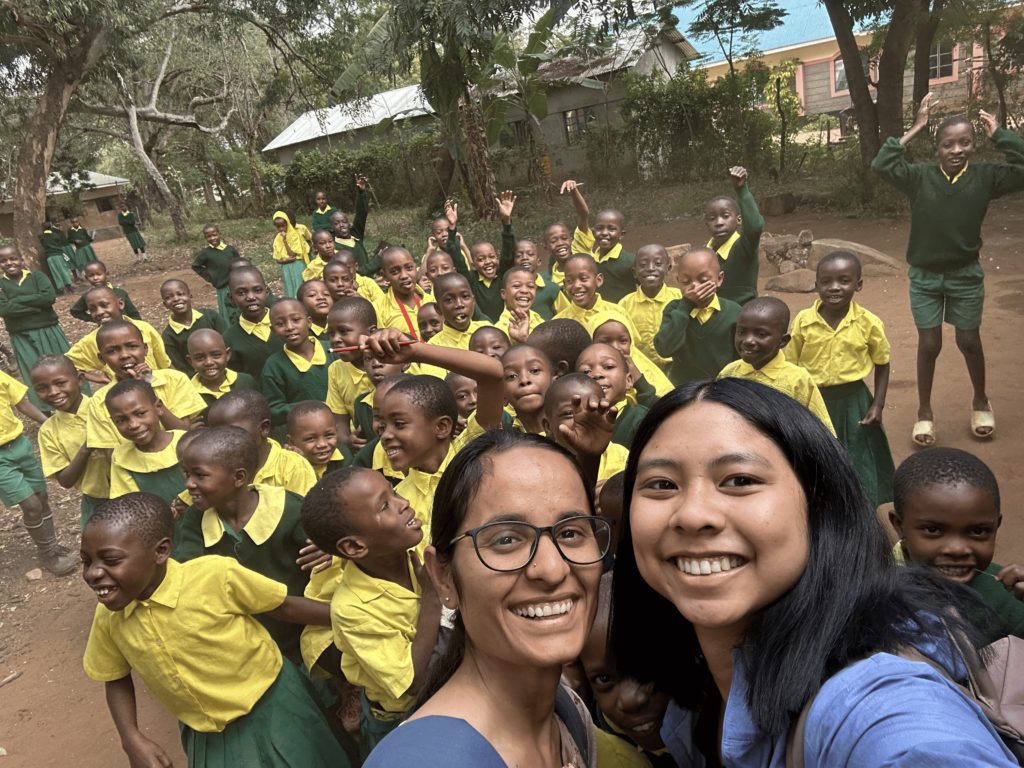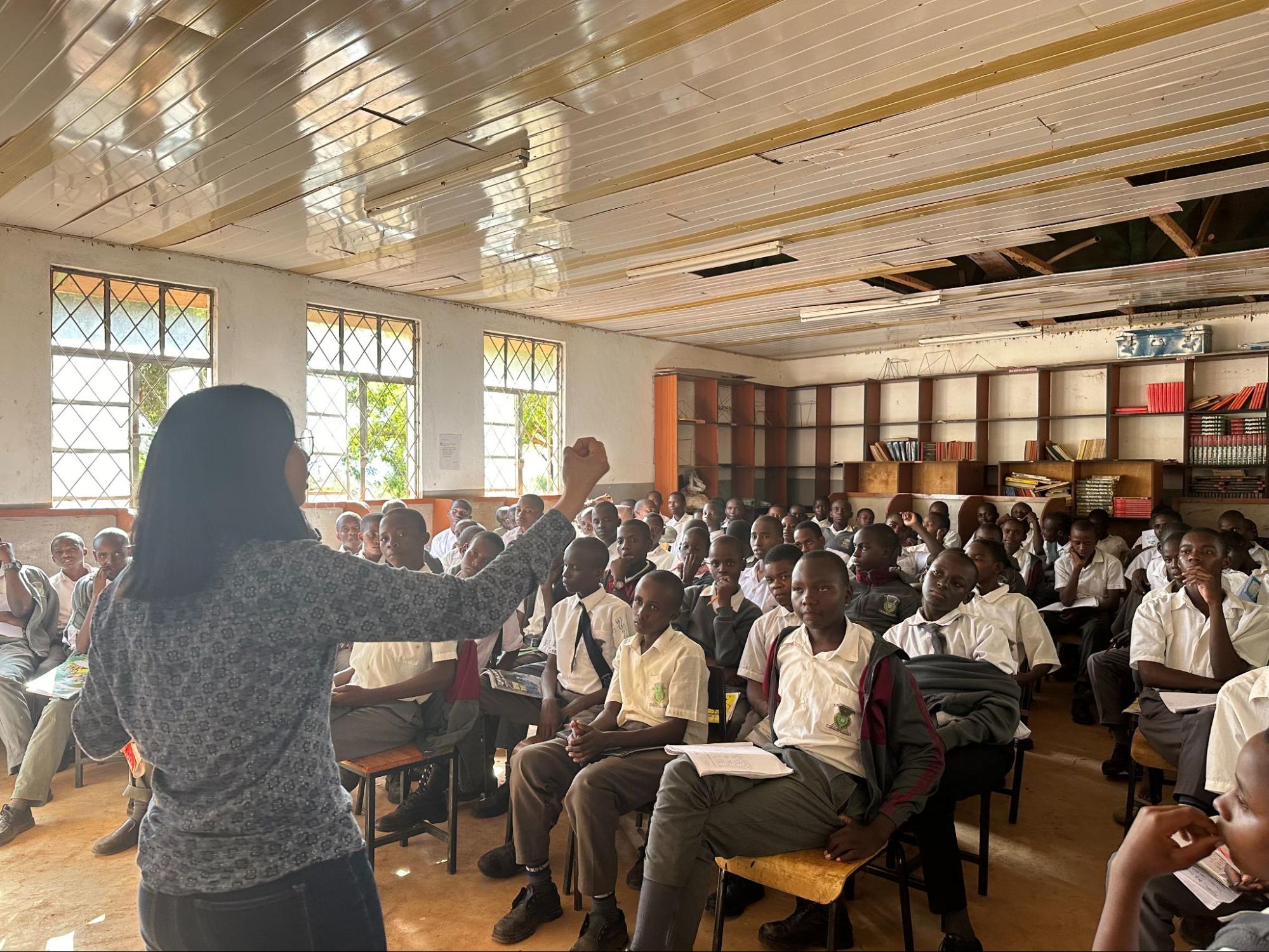By Sarah Bernardo, 4th Year English and Legal Studies Double Major, UC Berkeley
According to the official International Women’s Day (IWD) website, IWD was first celebrated on March 19, 1911 in the countries of Austria, Germany, Switzerland, and Denmark. Women campaigned for an end to gender discrimination and rallied for increased working, voting, and political rights. In 1913, on the precipice of WWI, March 8 was declared the official date for IWD.
More than 100 years later, International Women’s Day continues to be honored as “a global day celebrating the social, economic, cultural, and political achievements of women. The day also marks a call to action for accelerating gender parity.” This year’s theme #BeBoldForChange encourages people around the world to take action to advance gender equality.
The Blum Center for Developing Economies continues to be committed to this vision of gender parity and inclusivity. In honor of International Women’s Day, the Blum Center looks back at our engagement with gender equality over the past five years.
Here’s a snapshot of the numerous ways gender equality is featured in our programs.
Gender Equality is a Key Focus for Our Students
Many of the winners of the Big Ideas@Berkeley contest focused specifically on gender equality. For example, several Big Ideas projects aimed to promote female leadership. 100 Strong, third place winner in the 2013 Global Poverty Alleviation category, combats the lack of female leaders by training a network of female mentors that are matched with middle and high school girls. 100 Strong also empowers young girls to create their own community projects. Empowering Women through Entrepreneurship, the 2016 first place winner of the Financial Inclusion category, fosters economic empowerment in female migrants living in the squatter settlement of Ulaanbaatar, Mongolia. The organization offers the women information, skills, and low-interest microloans to help develop their small businesses.
Other Big Ideas projects focus on maternal and infant health. WE CARE Solar, winner in the 2008 and 2010 Big Ideas contests, helps meet vital maternity care needs by addressing the issues of unreliable power and communication in health care facilities. The organization developed and distributes compact solar electric systems called “solar suitcases” which power overhead LED lighting, charges cell phones, and provides LED headlamps with rechargeable batteries. Uniting Mother and Child: A Battle Against Postpartum Hemorrhage, third place winner in the 2014 Global Poverty Alleviation category, developed a pressure detecting and reporting device for anti-shock garments. The device aims to improve the ability of existing anti-shock garments to combat postpartum hemorrhage which is the most common cause of maternal mortality in developing countries. Lastly, Que Viva La Mujer: Knights Landing Community Maternal Health Program, second place winner of the 2013 Maternal and Child Health category, proposed opening a maternal care unit with an on-site OB/GYN in the Knights Landing community in Yolo County, California. The unit aims to meet the health care and educational needs of the migrant and undocumented women living in the community.
In addition to these Big Ideas proposals, an amazing group of Development Impact Lab (DIL) projects also directly address gender equality. WE CARE Solar and TriSAN are two such projects. TriSAN, a DIL Pipeline Project, focuses on promoting the interrelated goals of sustainable sanitation and gender equality in India. In particular, TriSAN conducted research to better understand the defecation, urination, and menstrual hygiene management needs of women and girls.
Women are Participating and Leading
Almost 75% of the participants in our undergraduate Global Poverty & Practice (GPP) minor are women. Alumni of GPP include Jessica Praphath who graduated in 2013. Passionate about public health and direct community service, Praphath completed her practice experience at the Community Partnership for Families of San Joaquin, and she went on to work there after graduation. Praphath now works as a Junior Consultant at the public health research and consulting firm, John Snow, Inc.
Similarly to Praphath, Nikki Brand‘s GPP experience has had a deep impact on her career trajectory. Dedicated to conducting development fieldwork addressing poverty, Brand moved to Guatemala shortly after graduating in 2013 to work for Community Enterprise Solutions. Brand now serves as Program Analyst for Feed the Future, a U.S. Global Development Lab at USAID. The initiative focuses on global hunger and food security.
In addition to participating in Blum Center programs, women also lead them. Women led almost 90% of gender equality projects in GPP, 65% of similar projects in Big Ideas, and 57% of gender equality projects in DIL. For example, Katya Cherukumilli led a winning 2015 Big Ideas team. Her team’s proposal was “A Novel Approach to Remediate Groundwater Fluoride Contamination in Nalgonda, India.” Laura Stachel is another outstanding female leader. Stachel co-founded WE CARE Solar in 2006. In addition to the Big Ideas awards, her organization received a DIL grant.
Promoting Gender Equality Beyond UC Berkeley
Faculty, staff, and students associated with the Blum Center have also contributed to the wider pursuit for gender equality beyond campus.
In 2016, Laura Tyson, the Chair of the Board of Trustees for the Blum Center, and Jeni Klugman co-authored the first report for the UN Secretary General’s High-Level Panel on Women’s Economic Empowerment. The report entitled “Leave No One Behind: A Call to Action for Gender Equality and Women’s Economic Empowerment,” begins by explaining the importance of women’s economic empowerment and delivers a decisive call to action. It goes on to describe the pervasive gender gaps in areas such as employment, wages, enterprise ownership, and access to assets. The report then analyzes seven “proven and promising” strategies for expanding women’s economic opportunities which includes tackling adverse social norms and promoting positive role models as well as changing business culture and practice. Lastly, the report closes by detailing a robust agenda for action comprised of seven key principles:
- No woman left behind.
- Nothing done for women without women.
- Equal focus on rights and gains.
- Tackle root causes.
- State parties must respect international human rights and labour standards.
- Partnerships are critical.
- Deliver globally.
While Professor Tyson and her team focused on improving gender equality in terms of economic opportunities, Rachel Dzombak and Chloe Gregori released a Blum Center article on January 20 centered on the role of academia in striving for gender parity. In the article, Dzombak and Gregori discus the United Nation’s fifth Sustainable Development Goal (SDG 5), “Gender Equality. In response to SDG 5’s call to action, the Blum Center re-examined how academia can promote gender parity in the classroom and beyond. Dzombak and Gregori spoke with staff, faculty, and students in the Blum Center ecosystem. Through their discussions, four insights emerged on how academia can encourage gender equality: provide students (of all genders) opportunities to establish empathy regarding gender discrimination and inequality, support faculty and classes that engage in gender dimensions, connect women students with women mentors, and broaden the innovation ecosystem to encourage interdisciplinary action when tackling issues of gender-based inequality and violence.
Based on knowledge developed by partners such as Tyson, Gregori, and Dzombak, the Blum Center will continue to increase our efforts to achieve inclusivity and parity in the classroom, within the lab, and on the field. With all that has been accomplished in the last five years, the Blum Center is hopeful that the next five will yield even greater progress towards gender equality.



